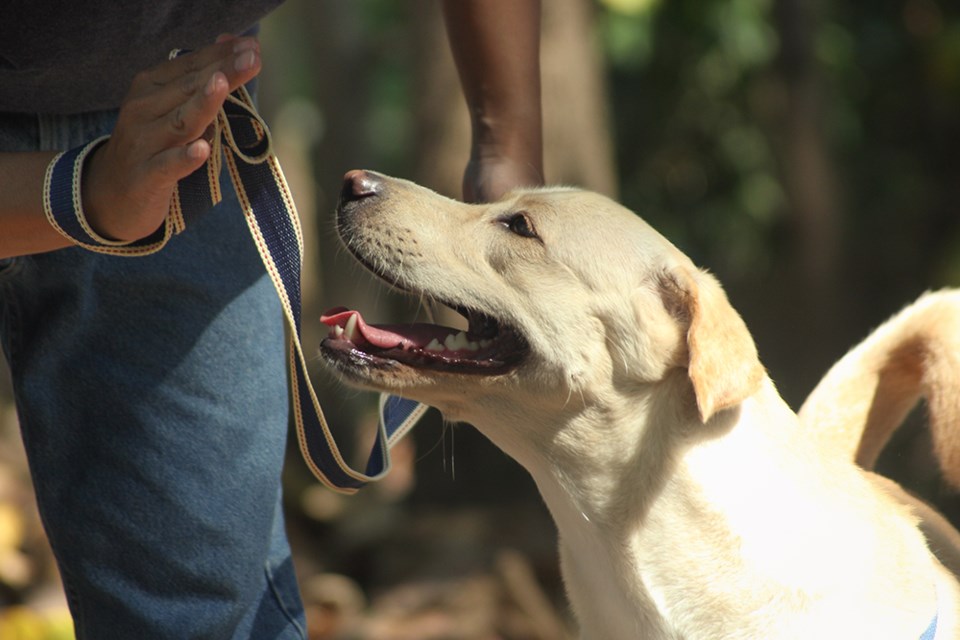When leashed and unleashed dogs share trails or parks, it can lead to conflict, but it doesn’t need to. There are ways to handle the situation that create good feelings and enjoyable walks for everyone.
Most dogs greet other dogs happily and then move on. Some dogs, however, need space and are kept on leash. Age or physical infirmity could be why a dog needs space.
Often, dogs need space because they are worried about or afraid of other dogs. These dogs may react strongly and exhibit aggressive behaviour, such as barking and lunging in the presence of other dogs, especially when a dog comes close to them.
If an unleashed dog has poor social skills and comes charging up, instead of approaching gently on a curve, this can intensify the leashed dog’s reaction because it is constrained by the leash and unable to control his or her own safety. Unfortunately, if the leashed dog reacts by barking or lunging or growling, it is often labelled unfriendly or aggressive when in fact it is the off-leash dog who is demonstrating a lack of manners.
How can we give leashed dogs the space they need? If you are walking your dog off leash and see a leashed dog in the distance, do not allow your dog to approach the dog on leash, even if your dog is friendly.
Don’t call out, “It’s okay, he’s friendly” and let your dog barrel ahead. Instead, respect the leashed dog’s need for space and demonstrate empathy for the dog’s owner. Call your dog and snap on his leash. Give the leashed dog as much distance as you can from you and your dog.
Your thoughtfulness will be appreciated and contribute to the person’s and dog’s peace of mind.
If you have a dog who is reactive to other dogs and you see an unleashed dog in the distance, be proactive. Call out and ask for help. The best time to ask for help is before anything happens. You can say something like, “Can you help me? My dog is afraid of other dogs. Could you please keep your dog away?”
If your appeal for help doesn’t work, and you get the “It’s okay, he’s friendly” response, then you can be directive and say what you need to have happen, such as: “Stop! I need your dog not to approach.” Make it clear that it’s not negotiable.
You can also employ management techniques such as an emergency u-turn, blocking the approaching dog with your body, and picking up a small dog. Carry treats and throw a handful at the approaching dog.
It’s not easy having a dog who is reactive to other dogs. Owners who keep their reactive dogs on leash are being responsible and considerate of others. They and their dogs deserve our consideration in turn. Give them the space they need and make the world a kinder place.
Sandy Middleton is a dog trainer and behaviour consultant. For more information, go to bestfriendsdogtraining.ca.
According to City of Powell River's Animal Control Bylaw, No. 1979, 2003, "it is mandatory that all dogs be kept on a leash and under the control of the owner when on public property, excluding off-leash parks. A leashed dog protects the owner, animal and public from the dangers of wild animals, vehicles and possible attack from other animals, as well as saving the owner the cost of possible fines."
Join the Peak's email list for the top headlines right in your inbox Monday to Friday.



